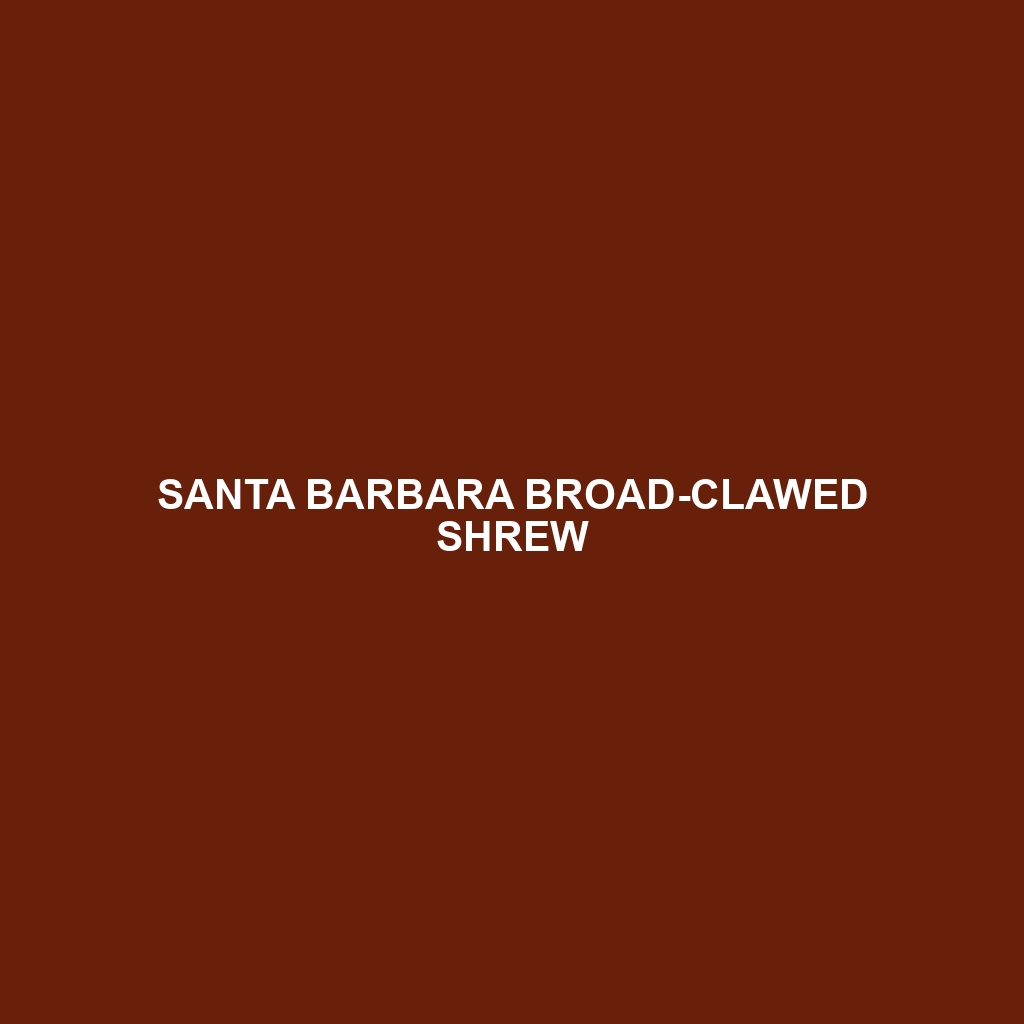Santa Barbara Broad-clawed Shrew
Common Name: Santa Barbara Broad-clawed Shrew
Scientific Name: Sorex ornatus
Habitat
The Santa Barbara Broad-clawed Shrew primarily inhabits the coastal regions of Southern California, particularly around Santa Barbara County. This species is often found in moist environments such as grasslands, shrubs, and woodlands where adequate cover and food sources are plentiful. The shrew thrives in areas with a rich presence of leaf litter and underbrush, providing the necessary habitat for foraging and nesting.
Physical Characteristics
The Santa Barbara Broad-clawed Shrew is a small mammal, measuring approximately 10 to 12 centimeters in length. Its fur is typically a mix of gray and brown, with a lighter underside. Notable features include broad, clawed toes that allow it to dig effectively in search of prey, and its elongated snout which facilitates a high sense of smell. The shrew’s eyes are relatively small and its ears are partially hidden, which is indicative of its adaptation to a life spent largely in the underbrush.
Behavior
This species exhibits a range of interesting behaviors. The Santa Barbara Broad-clawed Shrew is primarily nocturnal, becoming active during twilight hours when it hunts for insects and other small invertebrates. It is known for its high metabolism and may eat up to three times its body weight in food daily. The shrew’s agility allows it to navigate quickly through dense foliage, and it communicates using a series of high-pitched vocalizations.
Diet
The diet of the Santa Barbara Broad-clawed Shrew primarily consists of invertebrates such as earthworms, beetles, and spiders. They also consume small vertebrates occasionally. This high-protein diet is crucial for their energy levels given their rapid metabolic rate. They are known to forage extensively, digging through soil and leaf litter to locate food.
Reproduction
The breeding season for the Santa Barbara Broad-clawed Shrew occurs in spring, where females can have several litters per year. A typical litter consists of 3 to 6 offspring after a gestation period of approximately 21 days. Young shrews are born blind and hairless, relying on their mother for warmth and nutrition until they are fully developed. Parental care is essential, as the young are nurtured within a nest lined with soft materials found in their environment.
Conservation Status
The Santa Barbara Broad-clawed Shrew is currently listed as vulnerable due to habitat loss and environmental changes associated with urban development and agricultural practices. Conservation efforts are crucial to preserving this species’ natural habitat and ensuring its survival.
Interesting Facts
One fascinating aspect of the Santa Barbara Broad-clawed Shrew is its unique adaptation to its environment; the shrew produces heat through brown fat, allowing it to maintain body temperature even in cooler climates. Additionally, its ability to consume large quantities of food daily aids in its survival strategy against predators.
Role in Ecosystem
The Santa Barbara Broad-clawed Shrew plays a vital role in its ecosystem as both a predator and prey. By controlling the population of various insects and invertebrates, it helps maintain ecological balance. Furthermore, shrews serve as a food source for a variety of larger animals, including birds of prey and mammals, thus contributing to the food web within their habitat.
